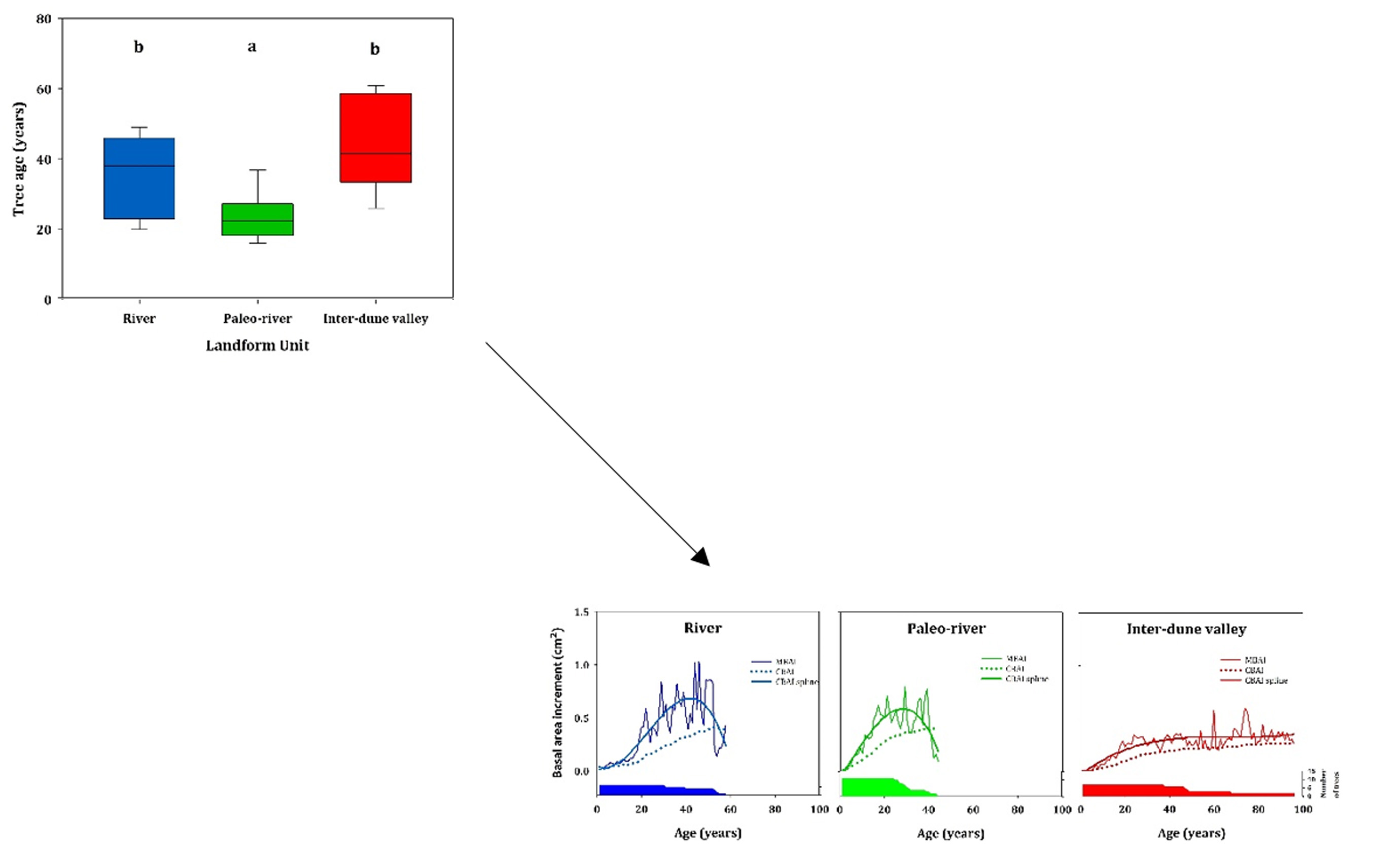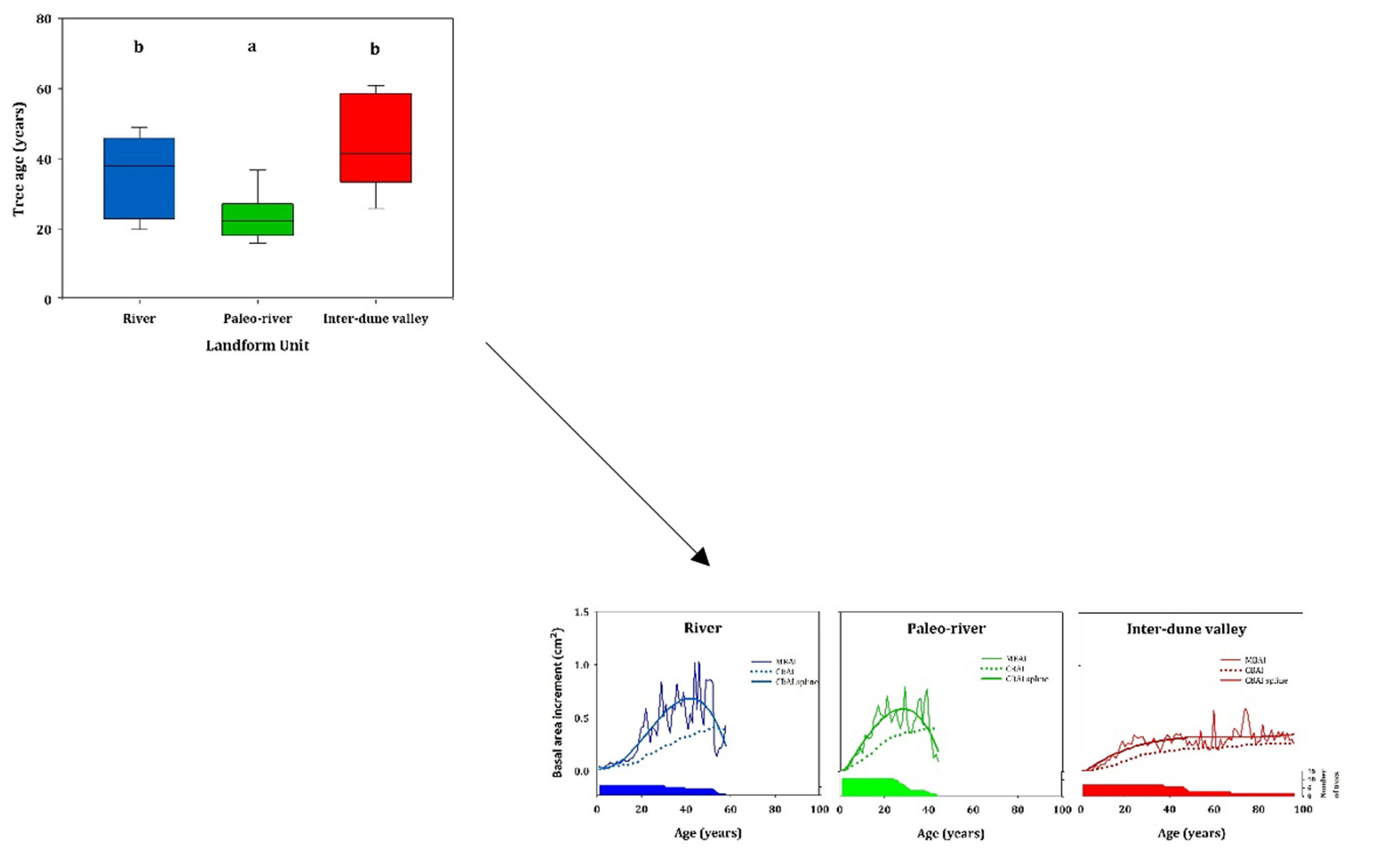Landform heterogeneity drives multi-stemmed Neltuma flexuosa growth dynamics. Implication for the Central Monte Desert forest management
DOI:
https://doi.org/10.48162/rev.39.120Palabras clave:
bosques de tierras secas, manejo forestal, forma de crecimiento, ancho de anilloResumen

Drylands represent the main earth biome, providing ecosytemic services to a large number of people. Along these environments, woodlands are often dominated by multi-stemmed trees, which are exploited by local inhabitants to obtain forest products for their livelihood. In central-west Argentina, Neltuma flexuosa (algarrobo) woodlands are distributed across different landform units, varying in topographical and soil characteristics. This research aimed to reconstruct stem-growth time until harvestable diameter was achieved, and biological rotation age according to topo-edaphic variability in three algarrobo forests using dendrochronological methods. Results indicated that landform heterogeneity modulated species radial growth, influencing stem increments and cutting cycle period. In this sense, a decreasing trend in tree productivity emerged along a loamy-to-sandy textured soil gradient. These findings provide useful novel information for N. flexuosa forest management, suggesting the need to account for spatial landform/soil heterogeneity when examining desert forest dynamics.
Highlights:
- Neltuma flexuosa provides forest product (poles) to Central Monte Desert (Argentina) local inhabitants.
- N. flexuosa wood productivity was assessed for different topo-edaphic landforms.
- Cutting cycle was reached at younger ages at river and paleo-river landforms.
- Wood extraction must consider landscape heterogeneity.
Descargas

Descargas
Publicado
Cómo citar
Número
Sección
Licencia
Derechos de autor 2018 Revista de la Facultad de Ciencias Agrarias UNCuyo

Esta obra está bajo una licencia internacional Creative Commons Reconocimiento-NoComercial-CompartirIgual 3.0.
Aquellos autores/as que tengan publicaciones con esta revista, aceptan las Políticas Editoriales.










.jpg)




